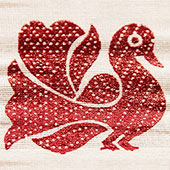Saree Weaving - Thrissur, Kerala
Kerala Saree is also known as the kasavu saree, the traditional wear of the Keralite is worn by the women during different occasions and festivals. Traditional wears of Kerala are the Kerala Set-Saree, Set-Mundu, Neriyath, Kavani, Kasava, etc. These traditional wears are specially made at Kuthampully of the Thrissur district of Kerala in India. It is specially made by the Devanga Chettiar community who originally belongs to the Mysore region of Karnataka who had shifted their looms to Kuthampully long years ago for weaving for the Raja of the Kochi Palace.
It is said there are about 2000 people of this place and community who still continue their tradition given by their ancestors. Kuthampully village is located in the Thiruvilwamala grama panchayat of the Thrissur district i.e. said to be about 50 km northeast of the Thrissur district.
Kerala Saree generally is of a single piece of cloth whereas traditional mundum neriyathum is of a two-piece cloth. It is considered as the cultural costume of the Malayali community with the beauty and charm of the golden borders with the plain white mundum neriyathum. Nowadays this is mostly draped in the nivi or the national style of draping. Traditionally it is said that the mundum neriyathum was worn with the neriyathu tucked inside the blouse.
The coloured strip at the border are referred to as Kara, the piece of cloth that drapes the lower garment is called mundu and the upper garment called the neriyathu. One end of the neriyathu is worn over a blouse that is tucked inside the pavadai or petticoat with the left behind long end of neriyathu is worn diagonally to the front torso.
The mundum neriyathum is worn as an everyday attire and also for the festive occasions. Previously the colour of the blouse determines the age and the marital status of the woman. The young spinster girls wear the green colour and the married middle-aged mothers the red colour. Kasavu (golden border) is of generally pure golden, copper coated or artificial. It is found that mostly the simple line designs adorn the bottom of the saree whereas the small peacock or temple designs are ornamented on the pallu part.







